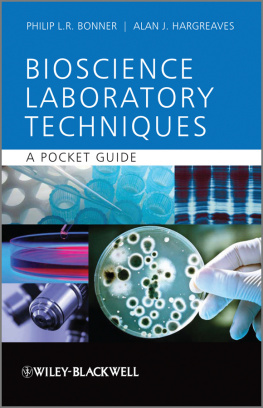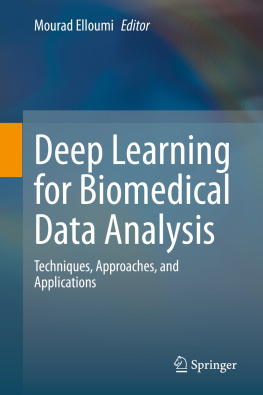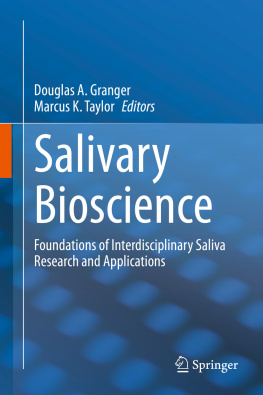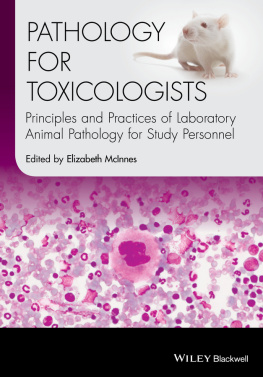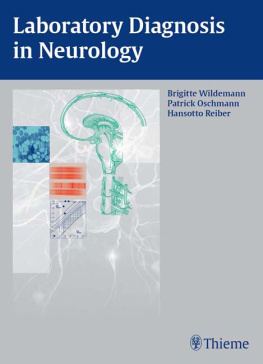This edition first published 2011 2011 by John Wiley & Sons, Ltd.
Wiley-Blackwell is an imprint of John Wiley & Sons, formed by the merger of Wileys global Scientific, Technical and Medical business with Blackwell Publishing.
Registered office:John Wiley & Sons, Ltd, The Atrium, Southern Gate, Chichester, West Sussex, PO19 8SQ, UK
Editorial offices:
9600 Garsington Road, Oxford, OX4 2DQ, UK
The Atrium, Southern Gate, Chichester, West Sussex, PO19 8SQ, UK
111 River Street, Hoboken, NJ 07030-5774, USA
For details of our global editorial offices, for customer services and for information about how to apply for permission to reuse the copyright material in this book please see our website at www.wiley.com/wiley-blackwell .
The right of the author to be identified as the author of this work has been asserted in accordance with the UK Copyright, Designs and Patents Act 1988.
All rights reserved. No part of this publication may be reproduced, stored in a retrieval system, or transmitted, in any form or by any means, electronic, mechanical, photocopying, recording or otherwise, except as permitted by the UK Copyright, Designs and Patents Act 1988, without the prior permission of the publisher.
Designations used by companies to distinguish their products are often claimed as trademarks. All brand names and product names used in this book are trade names, service marks, trademarks or registered trademarks of their respective owners. The publisher is not associated with any product or vendor mentioned in this book. This publication is designed to provide accurate and authoritative information in regard to the subject matter covered. It is sold on the understanding that the publisher is not engaged in rendering professional services. If professional advice or other expert assistance is required, the services of a competent professional should be sought.
Library of Congress Cataloguing-in-Publication Data
Bonner, Philip L. R.
Basic bioscience laboratory techniques: a pocket guide/Philip Bonner and Alan Hargreaves.
p.; cm.
Includes bibliographical references and index.
ISBN 978-0-470-74309-6 (pbk.)
1. BiologyLaboratory manuals. 2. BiologyHandbooks, manuals, etc. I. Hargreaves, Alan. II. Title.
[DNLM: 1. Laboratory Techniques and ProceduresHandbooks. 2. BiotechnologyHandbooks. 3. Research-Handbooks. QY 39]
QH317.B66 2010
570.78dc22
2010033321
PREFACE
In recent years there have been many advances made in the field of bioscience research. This progress has been driven by parallel advances in methodology. New and minor modifications to existing techniques can propel and enhance scientific investigation. However, the use of any procedure can only be advantageous if there is an appreciation of the basic principles, requirements, benefits and pitfalls of the techniques employed. This is true for both experienced as well as novice investigators.
We have been teaching in the HE sector for the past 20 years. During this period we have become increasingly aware that newly enrolled students are struggling to appreciate the basics of laboratory techniques and data analysis. Although the reasons for this are many fold, a sound platform for scientific investigation is still dependent upon the understanding and correct use of basic bioscience laboratory techniques. Our students perceive that there is a lack of appropriate support in the literature. With this in mind, the rationale for this book is to supply you (students) with an easy to use reference book that will provide you with a basis for understanding the basic bioscience techniques that you will come across in your HE studies.
The book provides the foundation of many basic laboratory techniques, worked examples of common calculations and (we hope) helpful tips. We wanted the book to be used prior to, during and after laboratory classes, which is why it is designed to fit into the pocket of a laboratory coat. The content reflects the size constraints and accompanying material will be available on a companion web page. In addition, supplementary reading will be needed to provide more detailed information on the techniques covered.

